-
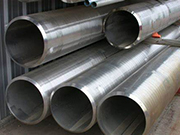
Una breve discusión sobre la aplicación y las características de las tuberías de acero de 120 diámetro
Las tuberías de acero de 120 diámetro son un tipo común de tubería en la industria del acero y tienen una amplia gama de aplicaciones. Desempeña un papel importante en la construcción, la ingeniería, la fabricación y otros campos. Primero, el campo de aplicación de las tuberías de acero de 120 diámetro 1. Campo de construcción: 120 diámetro ST ...Leer más -
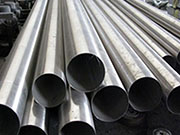
El proceso de fabricación y los campos de aplicación de la tubería de acero 15210
Steel Pipe 15210, como uno de los productos importantes en la industria del acero, tiene una amplia gama de usos y diversos procesos de fabricación. La tubería de acero 15210 generalmente se refiere a una tubería de acero con un diámetro de 15 mm y un espesor de pared de 2 mm. Su material es generalmente de acero al carbono o acero de aleación. Ste ...Leer más -
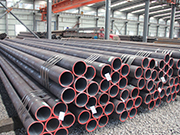
Detalles industriales de tubería de acero sin costuras D1805
En la construcción y la fabricación modernas, las tuberías de acero son un material básico indispensable. Entre ellos, la tubería de acero sin costuras D1805 es un producto con una artesanía exquisita y una excelente calidad, que contiene tecnología industrial profunda y valor artístico. 1. El origen y la fabricación t ...Leer más -
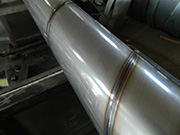
¿Cuáles son las precauciones para las operaciones de soldadura de tuberías de acero?
Las precauciones en los métodos operativos de soldadura son esenciales para garantizar la calidad y seguridad de la soldadura. Aquí hay algunas consideraciones clave: preparación antes de la soldadura de tubería de acero: - Asegúrese de que el área de soldadura esté limpia y libre de aceite, óxido, pintura u otras impurezas. - Para materiales de soldadura requeridos, como ...Leer más -
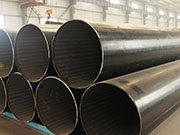
Aplicación y características de la tubería de acero DN900
En la construcción y fabricación de ingeniería moderna, las tuberías de acero juegan un papel indispensable como material importante. Entre ellos, la tubería de acero DN900, como tubería de acero más grande, tiene aplicaciones y características únicas. 1. Conceptos y especificaciones básicas de la tubería de acero DN900 -Definición de DN900 S ...Leer más -
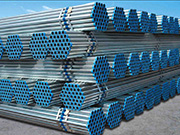
Cómo juzgar la calidad de las tuberías de acero galvanizado industrial
En la construcción, los campos industriales y civiles, las tuberías de acero galvanizado son un material de tuberías común y se usan ampliamente en el transporte de líquidos, gases y partículas sólidas. Sin embargo, con tantas marcas de tuberías de acero galvanizado en el mercado, los consumidores se enfrentan al problema de cómo JU ...Leer más -
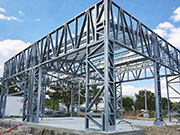
¿Cuáles son los beneficios de las estructuras de acero industrial?
En primer lugar, las estructuras de acero se utilizan ampliamente en la industria de la construcción, gracias a sus importantes ventajas. Estas son algunas de las principales ventajas: 1. Alta resistencia y peso ligero: el acero tiene alta resistencia y liviana, lo que puede hacer que el edificio sea más ligero, reduciendo así la carga en T ...Leer más -
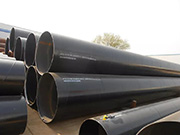
Proceso de procesamiento de tuberías de acero recubiertas de plástico de gran diámetro para el suministro de agua
1. Tratamiento de superficie de la tubería de acero: las superficies internas y externas de la tubería de acero se disparan con equipos de explosión de disparos. Después del tratamiento, cumplen con los requisitos SA2.5 en el estándar GB8923-1998. Después de la explosión de disparos, el equipo de adsorción de vacío se purga para lograr la Clase A Cleanlin ...Leer más -
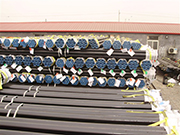
Detalle de tuberías de acero de tuberías sin costura
La tubería de acero de línea sin costura es un material de tubería clave que juega un papel importante en la industria moderna. Se usan ampliamente en petróleo, gas natural, industria química, energía eléctrica y otros campos, y realizan la importante tarea de transportar líquidos, gases y otros medios. Línea sin costura Ste ...Leer más -
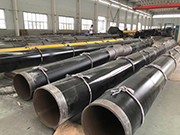
Detalles de tubería de acero de plástico de costura recta de gran diámetro
Características de las tuberías de acero recubiertas de plástico rectas de gran diámetro: sus características combinan las características de las tuberías de acero de costura recta y las características de la resina epoxi. 1: Características de las tuberías de acero de costura recta: las tuberías de acero de costura recta tienen un proceso de producción simple ...Leer más -
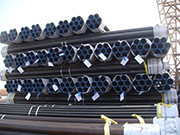
Detalles del proceso de tratamiento térmico de la tubería de acero sin costuras Normalización, recocido, templado, enfriamiento
① Tratamiento de calor: a. Calefacción: el calentamiento por debajo de AC1 es principalmente para estabilizar la estructura del acero y eliminar el estrés interno. El calentamiento por encima de AC3 es principalmente para austenitizar el acero. b. Aislamiento: El propósito es uniforme la temperatura de calentamiento de la tubería de acero para obtener un calentamiento razonable ...Leer más -
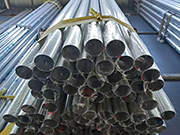
Pickling de solución sólida de tuberías de acero inoxidable sin costuras
En el reino del acero, las tuberías de acero inoxidable sin costuras se han convertido en el favorito de la construcción, químicos, petróleo, procesamiento de alimentos y otras industrias por su excelente resistencia a la corrosión y apariencia elegante. Sin embargo, para que estos gigantes metálicos mantengan su mejor estado en varias ...Leer más

